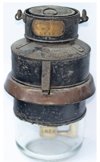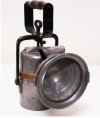Recently, during my railway line research I came across a newspaper article (7/8/1886) stating that the new lamp room building at Great Harwood station was almost complete. All that was left was to put the roof on. The article goes on to say this building could hold 620 carriage lamps. Harwood's four lane carriage sidings were installed two years before.
Questions:
what would a carriage lamp look like in the 1880's? The line was an LYR one.
How many lamps would an LYR carriage have had around this time?
What fuel did they burn?
And what about the fumes from them, how would they have been vented?
Presume they were suspended from the carriage ceiling?
Thanks,
Andy.
Questions:
what would a carriage lamp look like in the 1880's? The line was an LYR one.
How many lamps would an LYR carriage have had around this time?
What fuel did they burn?
And what about the fumes from them, how would they have been vented?
Presume they were suspended from the carriage ceiling?
Thanks,
Andy.


 ) .
) .